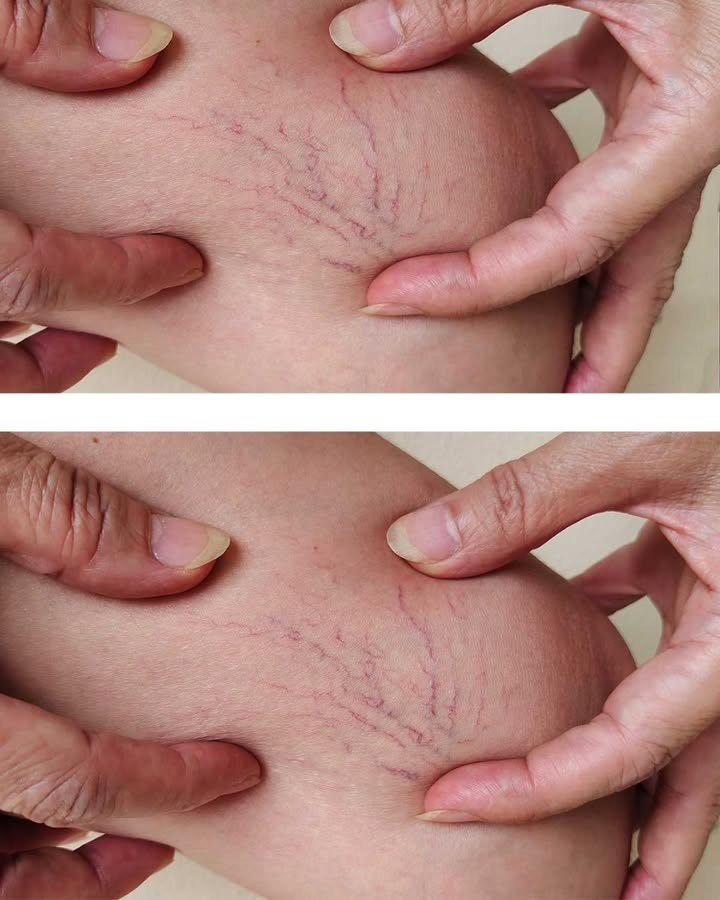Don’t sit cross-legged for long periods. It compresses inner thigh veins.
Avoid very hot baths or saunas if veins are inflamed; heat dilates vessels further.
Skip over-the-counter steroid or bleaching creams unless prescribed—they won’t help veins.
Avoid massaging firm or warm veins (possible clot risk).
9. Over-the-counter products (temporary aids)
Topical vein toning creams with vitamin K, horse-chestnut extract, or witch-hazel may improve comfort or mild discoloration.
Leg cooling gels with menthol or camphor can provide temporary relief after standing long hours.
While these won’t remove veins, they can make legs feel lighter.
10. Medical treatments your doctor may discuss later
Once you reach your appointment, your physician might explore:
Sclerotherapy – Injecting a mild solution to collapse spider veins.
Laser or intense pulsed light therapy – Non-invasive light energy sealing surface veins.
Compression therapy – Custom-fitted stockings or wraps.
Ultrasound evaluation – To rule out deeper venous insufficiency.
11. Tracking your progress
Keep a small leg-health journal:
Note when you first saw red veins.
Record any pain, swelling, color change, or triggers (heat, long standing).
Take a weekly photo (same lighting) to show your doctor the pattern.
This helps pinpoint cause and track whether home care helps.
12. When to escalate sooner
Even if your appointment is weeks away, contact a healthcare provider sooner if:
Pain increases or swelling worsens rapidly.
Red veins form warm, raised lines.
One leg suddenly looks much larger than the other.
You experience shortness of breath or chest pain (emergency – call your local emergency number).
13. Mental and emotional aspect
